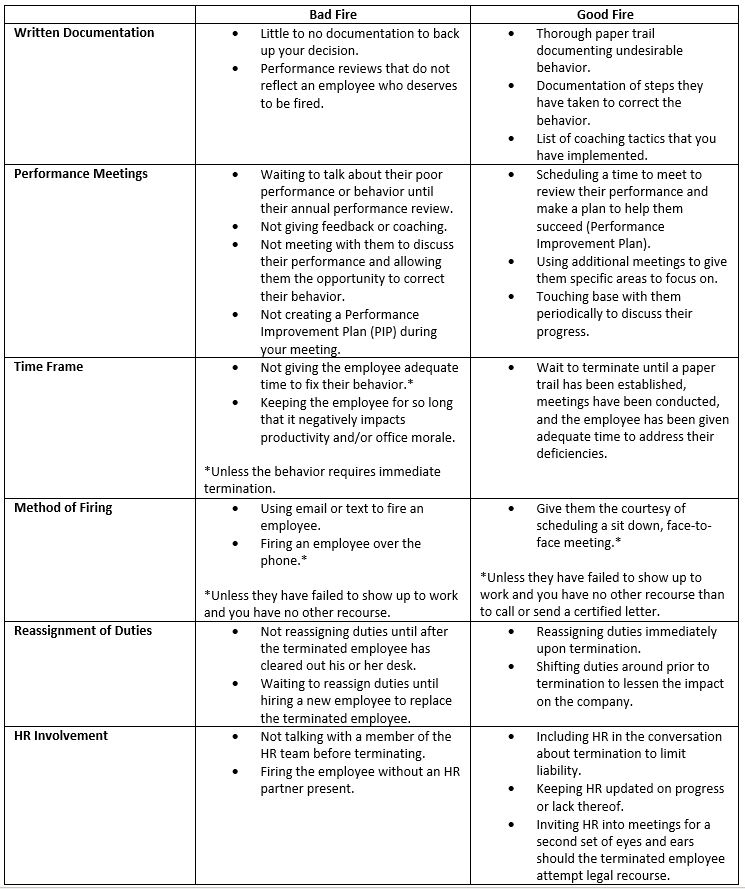Bad Fire vs Good Fire

While we have all heard positive phrases like “good hire”, as well as the dreaded “bad hire”, have you ever stopped to consider what constitutes a “good fire” or a “bad fire”? It is a topic that most don’t like to discuss; after all, who wants to focus their time and energy on figuring out the most effective way to fire an employee (HR professionals excluded)? However, not investing time in planning the best way to let an employee go can lead to making a bad situation even worse through unpreparedness in your separation practices.
Look at the “Good Fire”/“Bad Fire” behavior chart below. What column do you find yourself in more often? If your practices tend to fall more in the “Bad Fire” category, try borrowing some ideas from the “Good Fire” column to improve your termination technique.

Termination may not be a topic that we want to focus on; however, it is necessary to be familiar with the process and the difference between a “good fire” and a “bad fire”. By utilizing the chart above, you can save yourself from a “bad fire” scenario in the future (and quite possibly a sticky legal situation).

